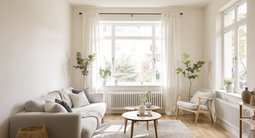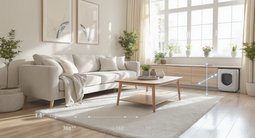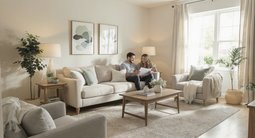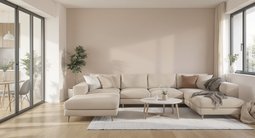TL;DR
Dopamine decor is the feel-good interior design trend that uses color, memory, and multisensory cues to spark happiness at home. Backed by neuroscience, it favors joy-first choices over rigid rules. Start small with a “joy audit,” then layer color, texture, and personal artifacts. Search intent tip: how to embrace the dopamine decor trend without making rooms chaotic.
Introduction

A dopamine-inspired nook blends soothing colors and tactile textures to elevate mood and comfort.
The Dopamine Decor Trend 2025: Color Psychology Meets Cozy Science
Design that feels as good as it looks, powered by neuroscience and your personal joy triggers.
Dopamine decor blends color psychology, interior design trends, and happiness science to help you decorate for joy.
Here is the thing: dopamine decor is not just a viral hashtag. It is a human-centered way to design that pairs color psychology with the brain’s reward system. If you have wondered how to decorate for happiness at home, this 2025 interior design trend explains why chartreuse, coral, or lavender can lift mood, and how personal objects anchor well-being. Research by neurobiologists Semir Zeki and Tomohiro Ishizu shows that aesthetically pleasing visuals activate the brain’s reward center, similar to being in love. That is a compelling reason to treat your living room like an everyday art experience.
And the science goes further. Cross-modal perception studies from Oxford’s Crossmodal Lab suggest one sense can influence another, so a joyful room can make coffee taste richer and fabrics feel softer. In other words, the best interior design is multisensory. The directive is simple and liberating: design for delight, then refine for balance.
Trend Overview
Trend Overview: Why Dopamine Decor Works
Designers often advise a 60-30-10 color ratio to balance vibrant palettes, keeping saturated hues to about 30 percent to avoid fatigue.
This year’s interiors slow down while dialing up feeling. Across homes and studios, dopamine decor overlaps with warm minimalism, playful color, and biophilic comfort. Short-tail keywords like dopamine decor, color psychology, and interior design trends meet long-tail searches such as how to use bold color without overwhelming a small room and the science behind dopamine decor. The unifying thread is personal pleasure. Instead of copying a showroom, people are building rooms around beloved colors, tactile fabrics, and meaningful mementos.
After years of safe neutrals, interest in joyful interiors has surged online, with social metrics citing tens of millions of posts tied to this trend. Yet the method is not chaos. Think thoughtful curation, sensory layering, and color confidence guided by a few solid rules of thumb.
Anecdote
A tiny pantry painted marigold changed a morning routine. Every cup of coffee felt sunnier, proving color can shift daily mood faster than any new appliance.
Design Trend Sections
Joy-Forward Color: Saturated Comfort
Experts recommend starting with one statement hue and echoing it in 3 to 5 accents for cohesion.
Joy-forward color prioritizes the shades that light you up, from leafy greens and energizing oranges to soft peach and calming lavender. It matters in 2025 because mood-supportive color is a low-cost, high-impact way to refresh interiors. Neuroscience aligns with lived experience here: pleasing color combinations can trigger dopamine along with serotonin and oxytocin, which is why a sunlit yellow pantry can feel like a micro-vacation. Designers often advise warm whites with a 2700K to 3000K color temperature so saturated paints read rich rather than harsh. A practical rule: test large paint swatches at least 24 by 24 inches and view them morning to evening before committing.
Another simple guideline is the 60-30-10 ratio. Use 60 percent as your base tone, 30 percent a supporting color, and 10 percent for high-contrast pops. If ceilings are low, keep your ceiling 10 to 15 percent lighter than the walls; if you want intimacy, go 10 to 15 percent darker.
How to Bring It Home
- Choose one hero color for upholstery, then repeat it in artwork, lamps, or trim.
- Pair bold hues with natural textures like oak, linen, or rattan to ground the palette.
- For conversation zones, aim for 1000 to 1500 lumens per 100 square feet to make color glow.
Mixed-Memory Maximalism: Personal Gallery Walls
Designers note that gallery walls look most refined when frames are spaced 2 to 3 inches apart and align along a midline at 57 inches from the floor.
Mixed-memory maximalism celebrates personal meaning over perfection. Think a gallery wall that mixes children’s art with fine prints, or a shelf where travel finds sit beside heirlooms. The point is not to match frames but to curate stories. This trend resonates now because it counters algorithmic sameness with intimacy and humor. It is also renter friendly and budget smart. Keep composition in check with a template on kraft paper, mark your midline, and lay out pieces on the floor before you commit to nails. A rule of thumb: combine one large anchor piece, two medium works, and several small moments to create rhythm.
How to Bring It Home
- Use a limited metal palette, like black and brass, so eclectic art still reads intentional.
- Float shelves to rotate pieces seasonally without more holes in the wall.
- Mix matte and glossy frames for subtle depth without visual noise.
Sensory Layering: Texture, Scent, and Sound
Aim for at least 20 to 30 percent soft surfaces in hard-floor rooms to reduce echo and stress perception.
Sensory layering is dopamine decor’s secret engine. It pairs plush textures, warm light, comforting scents, and gentle acoustics so rooms feel kind to the nervous system. Cross-modal perception suggests scent and sound can change how color and texture are experienced, which is why a mossy green bouclé sofa feels even cozier with a cedar candle and a low playlist. Designers recommend layered lighting in three planes: ambient, task, and accent. For reading, provide 300 to 500 lux at seat height, and keep bulbs within 2700K to 3000K for warmth. Add a thick rug that covers at least 60 percent of exposed hard flooring in living rooms to absorb noise.
How to Bring It Home
- Combine one chunky weave, one smooth velvet, and one nubby textile on seating for tactile contrast.
- Place sconces 60 to 66 inches from the floor to reduce glare in cozy corners.
- Introduce a signature scent per zone rather than the whole house to avoid fatigue.
The Fifth Wall: Ceilings as a Joy Canvas
Experts recommend painting ceilings 10 to 15 percent lighter than walls for height, or using a satin finish to bounce light in dark rooms.
The ceiling is an untapped happiness booster. A whisper of sky blue can make mornings brighter; a lacquered blush in a dining room turns every dinner into an occasion. Pattern works here too, especially stripes or stencils that pull color upward without crowding sightlines. If you are color-shy, start with tone-on-tone: choose a wall color, then shift the ceiling by one shade on the same strip. For drama, a soft gloss adds reflectivity, but keep it to smaller rooms so it feels jewel-box special. Remember the scale rule: mix one large pattern repeat, one medium, and one small to avoid visual chatter.
How to Bring It Home
- Wrap crown molding in the ceiling hue for a tailored, custom look.
- Use painter’s tape to test 12 inch wide stripes before committing.
- Pair colored ceilings with simple drapery to keep the eye moving upward.
Functional Joy Zones: Nooks That Change Your Day
A comfortable reading nook needs a 30 inch deep seat, 18 to 20 inch seat height, and a lamp placed 24 to 30 inches above the cushion.
Functional joy is where dopamine decor meets daily life. A window seat for morning coffee, a craft cart that rolls out on Sundays, or a plant-filled desk with soothing greens can change mood and momentum. The appeal in 2025 is pragmatic optimism. Good design should make routines easier and more pleasurable. Use activity-based planning: define a one-sentence purpose for each zone, then furnish only what serves it. Keep circulation paths at least 36 inches wide so joy does not become clutter. Add a dimmer so task lighting can shift to evening ambience.
How to Bring It Home
- Zone rugs to signal function: 8 by 10 under a sofa set, 5 by 7 for a reading corner.
- Corral tools in lidded baskets so creativity stays tidy.
- Choose greens for focus rooms, oranges for chatty spaces, and buttery yellows for utility areas.
Trend Crossovers & Contrasts
Trend Crossovers and Contrasts
Across trends, designers highlight one shared idea: joy needs structure to shine.
Though each trend feels distinct, they share a return to texture, craft, and restraint. Joy-forward color warms up quiet minimalism, while mixed-memory maximalism leans on consistent spacing and a limited finish palette. The fifth wall connects to sensory layering by bouncing light and deepening mood. Notice the material harmony too: oak, limewash, bouclé, and brushed brass recur because they temper saturated color without dulling it. The mindset shift is clear. Homes are less about perfection and more about presence.
Common Mistakes & More
What People Often Get Wrong About 2025 Design Trends
- Mistaking bold color for chaos. Use the 60-30-10 ratio and repeat one hue at least three times per room.
- Forgetting lighting. Saturated paints need warm bulbs at 2700K to 3000K and layered light to read luxurious.
- Over-layering patterns. Stick to one large, one medium, and one small scale to keep rhythm.
- Neglecting function. Define the purpose of each zone in one sentence before you buy anything.
- Copying trends verbatim. The most successful dopamine decor rooms include personal artifacts and memories.
Expert Insights and Mini-Anecdotes
Designers often advise testing color in daylight and lamplight because perception can swing 20 percent between morning and evening.
One homeowner swapped a beige sofa for moss green bouclé and added a cedar candle. The living room went from flat to cocoon-like in an afternoon. Another client painted a tiny pantry marigold. She swears her morning coffee tastes better, which tracks with cross-modal research on mood and flavor. A small Connecticut kitchen got a soft pink cabinet wash paired with unlacquered brass pulls. The family now lingers at breakfast; color did what clutter clearing could not.
Two quick rules designers repeat: keep art middles at 57 inches to align with average eye level, and maintain 36 inch aisles so rooms feel both joyful and navigable. As one pro put it, “Color brings the smile, flow keeps it there.”
Tools, Resources and Visualization
Test-drive ideas before you paint or purchase. With ReimagineHome, you can visualize dopamine decor palettes, try a sculptural sofa in your living room, or preview a mint ceiling without lifting a brush.
Picture a living room bathed in warm taupe with a chartreuse velvet chair, brushed brass accents, and a ceiling kissed with sky blue. That is quiet luxury without pretense.
- Alt-text ideas for visuals: “joy-forward color living room with chartreuse chair,” “mixed gallery wall with kids art and fine prints,” “soft pink kitchen with brass hardware.”
Visualization Scenario
A sunlit corner with a 30-inch deep window seat, moss bouclé cushion, cedar candle, and a swing-arm lamp at 2700K. The ceiling is a whisper of sky blue, and the rug softens footsteps as music hums low. It is a five-minute sanctuary built for joy.
FAQ
FAQ
How do I start with dopamine decor without overwhelming my space?
Begin with a joy audit, then add one statement color repeated in 3 to 5 accents and keep to the 60-30-10 color ratio for balance.
What colors work best for dopamine decor in a living room?
Greens and warm oranges encourage conversation, while buttery yellows add cheer; pair them with warm 2700K to 3000K lighting so hues feel rich.
How should I bring color psychology into a small apartment?
Use lighter ceilings 10 to 15 percent above wall value to boost height, limit saturated areas to 30 percent, and ground brights with natural textures.
What is the science behind dopamine decor?
Research shows pleasing visuals activate the brain’s reward center, and cross-modal studies suggest joyful rooms can enhance how we taste and feel.
How do you create a dopamine decor gallery wall that still looks sophisticated?
Align art around a 57 inch midline, space frames 2 to 3 inches apart, and mix one large anchor, two medium pieces, and small works for rhythm.
Tags:
- Color Psychology
- Interior Design Trends
- Dopamine Decor
- Joyful Interiors
- How to embrace the dopamine decor trend
- Living Room
- Warm Neutrals
- Paint Color
Ready to see your happy space before it exists? Mock up palettes, patterns, and layouts in minutes with ReimagineHome.
Conclusion
Closing Thought
In 2025, design is not about perfection. It is about presence, emotion, and the everyday rituals that make a life. The dopamine decor trend reframes interiors as mood-support systems. Choose the hues that lift you, the textures that calm you, and the objects that tell your true story. When your home mirrors your happiness, you do not just see beauty. You feel better in it, every single day.
.svg)

.svg)














.png)